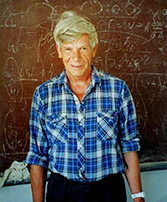Speaker
Description
Within the framework of the model with quark-gluon strings (color flux tubes) as sources, the properties of the strongly intense variable Σ, which characterizes the correlations between the number of particles in two observation windows separated in rapidity, are studied. We use a Regge-like quasi-eikonal approach to find the distribution of strings in the transverse plane of pp-collision. This allows us to take into account string fusion processes leading to the formation of string clusters using a finite lattice (grid) in the impact parameter plane. Analytical calculations, supplemented by MC simulation, make it possible to find the dependences of the variable Σ both on the width of the observation windows and on the size of the gap between them depending on the initial energy and centrality of the collision.
We show that in pp collisions at LHC energies, string fusion effects leading to the formation of string clusters have a significant effect on the behavior of this variable. We demonstrate that the experimentally observed dependence of the strongly intensive variable Σ on the initial energy and centrality of pp collisions can be explained only in the presence of sources of different types, the role of which in our model is played by single strings and clusters formed by the fusion of several strings. It is also shown that a comparison of the results of our model with the preliminary experimental data of ALICE makes it possible to extract the parameters of clusters with different numbers of merged strings, in particular, to find their two-particle correlation functions.
The research was supported by the SPbSU project, No 93025435.

